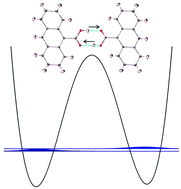Hydrogen bond dynamics in crystalline β-9-anthracene carboxylic acid—a combined crystallographic and spectroscopic study†
Abstract
We compare results from

* Corresponding authors
a
Max-Planck-Institut für biophysikalische Chemie, Strukturdynamik (bio)chemischer Systeme, Am Fassberg 11, 37070 Göttingen, Germany
E-mail:
rmore@gwdg.de
b Hasylab, Notkestr. 85, 22607 Hamburg, Germany
c Mineralogisch-Petrographisches Institut, Universität Hamburg, Grindelallee 48, 20146 Hamburg, Germany
d Deutsches Elektronensynchrotron DESY, FS-DO, Notkestr. 85, 22607 Hamburg, Germany
We compare results from

 Please wait while we load your content...
Something went wrong. Try again?
Please wait while we load your content...
Something went wrong. Try again?
R. Moré, M. Scholz, G. Busse, L. Busse, C. Paulmann, M. Tolkiehn and S. Techert, Phys. Chem. Chem. Phys., 2012, 14, 10187 DOI: 10.1039/C2CP40216E
To request permission to reproduce material from this article, please go to the Copyright Clearance Center request page.
If you are an author contributing to an RSC publication, you do not need to request permission provided correct acknowledgement is given.
If you are the author of this article, you do not need to request permission to reproduce figures and diagrams provided correct acknowledgement is given. If you want to reproduce the whole article in a third-party publication (excluding your thesis/dissertation for which permission is not required) please go to the Copyright Clearance Center request page.
Read more about how to correctly acknowledge RSC content.
 Fetching data from CrossRef.
Fetching data from CrossRef.
This may take some time to load.
Loading related content
